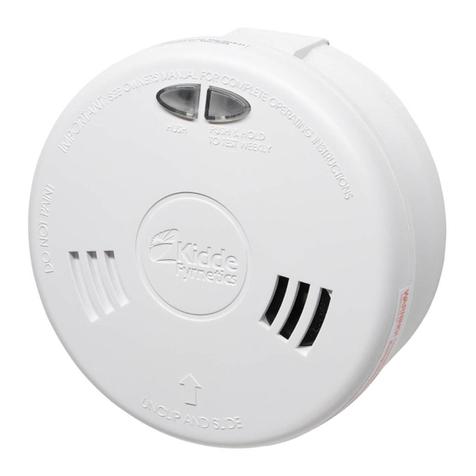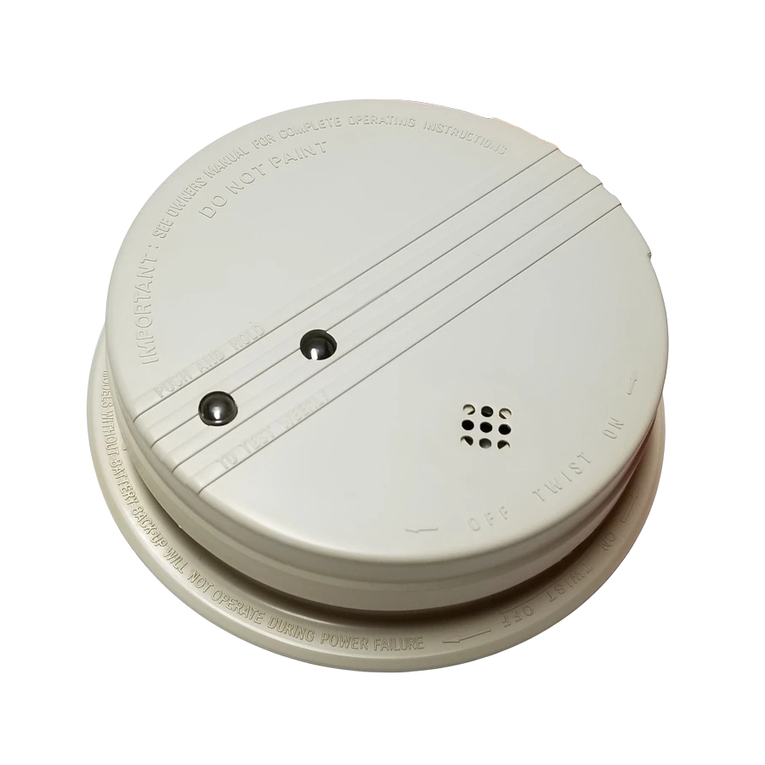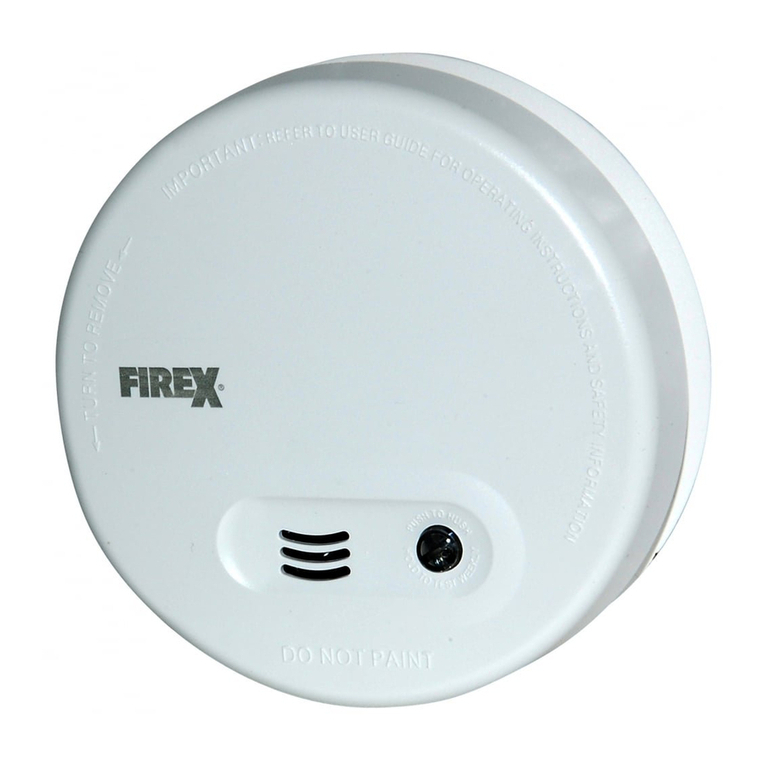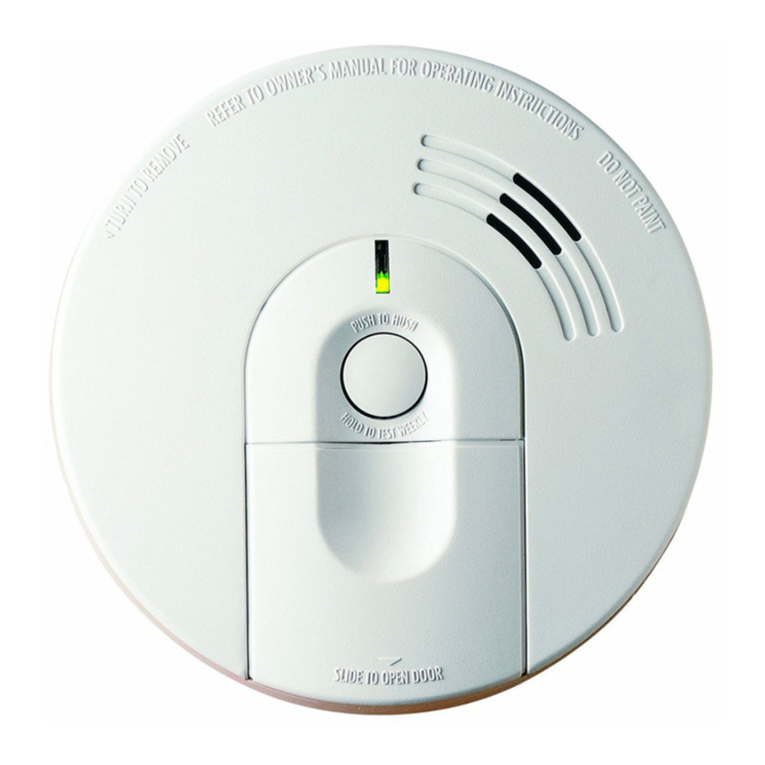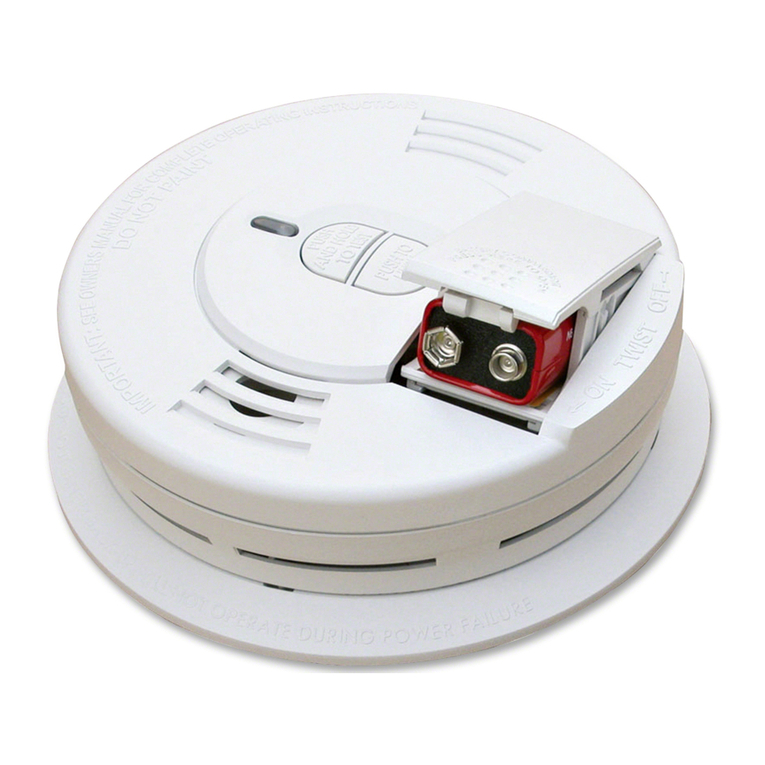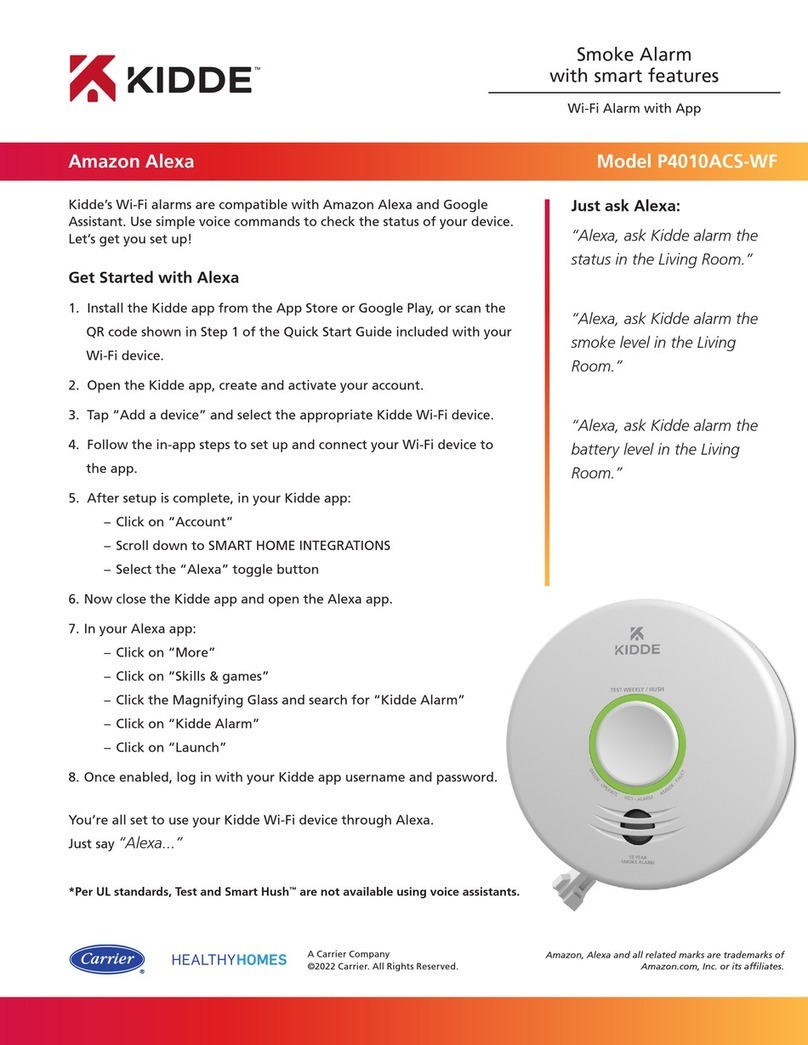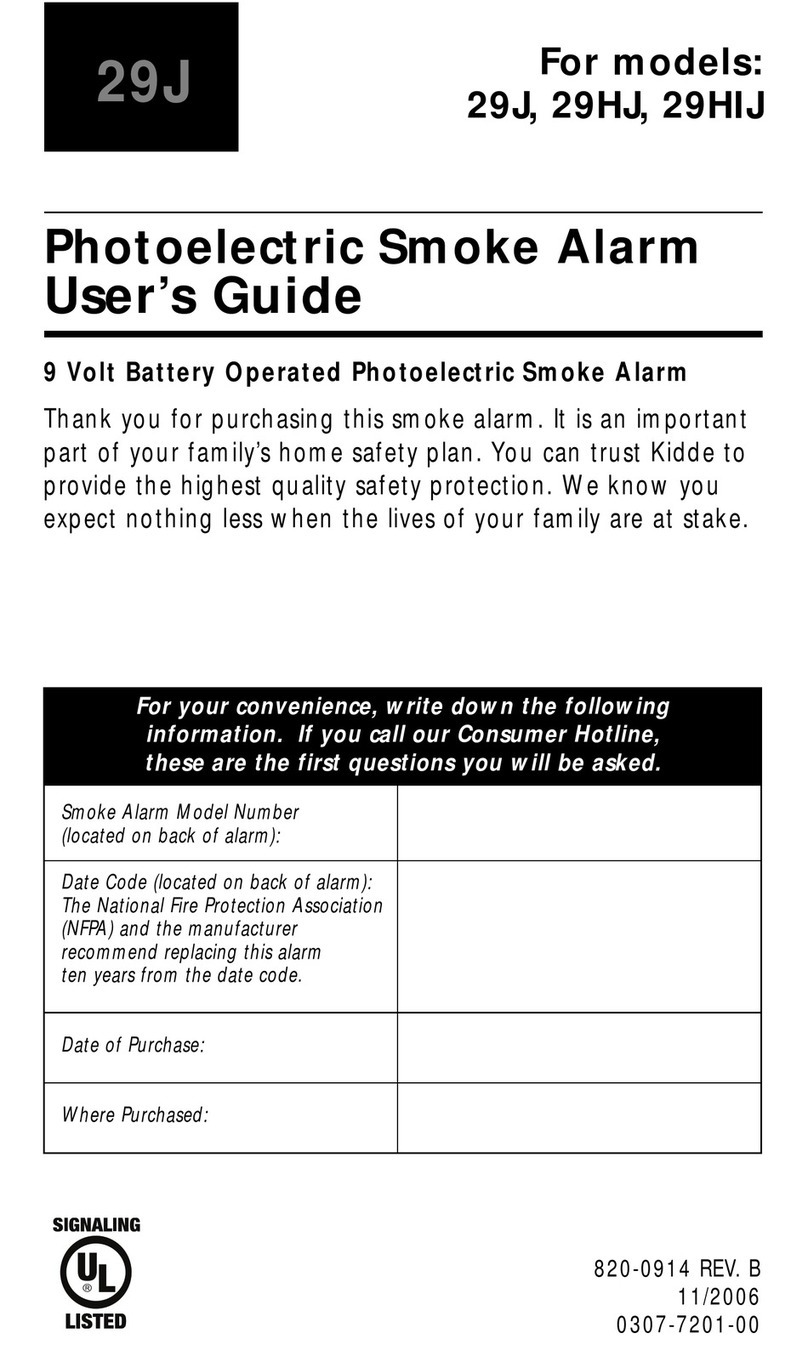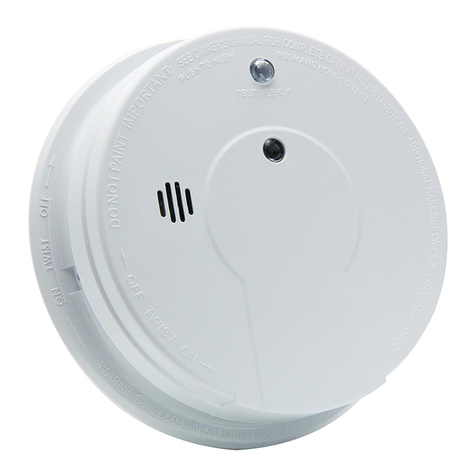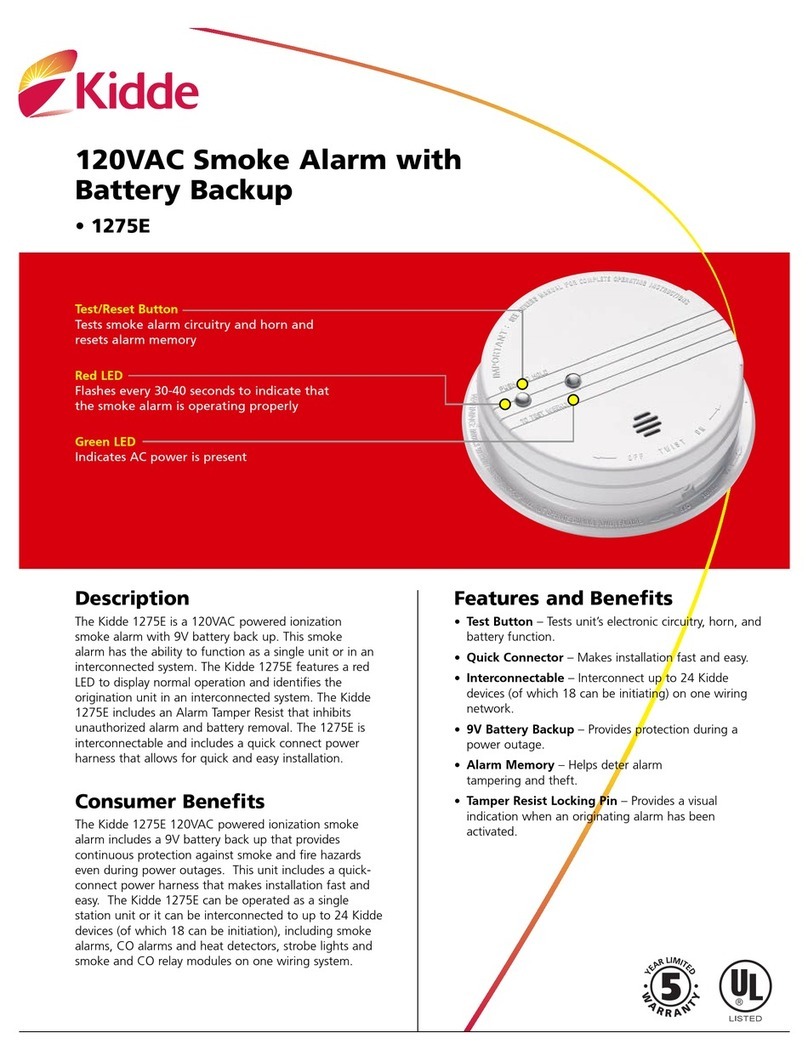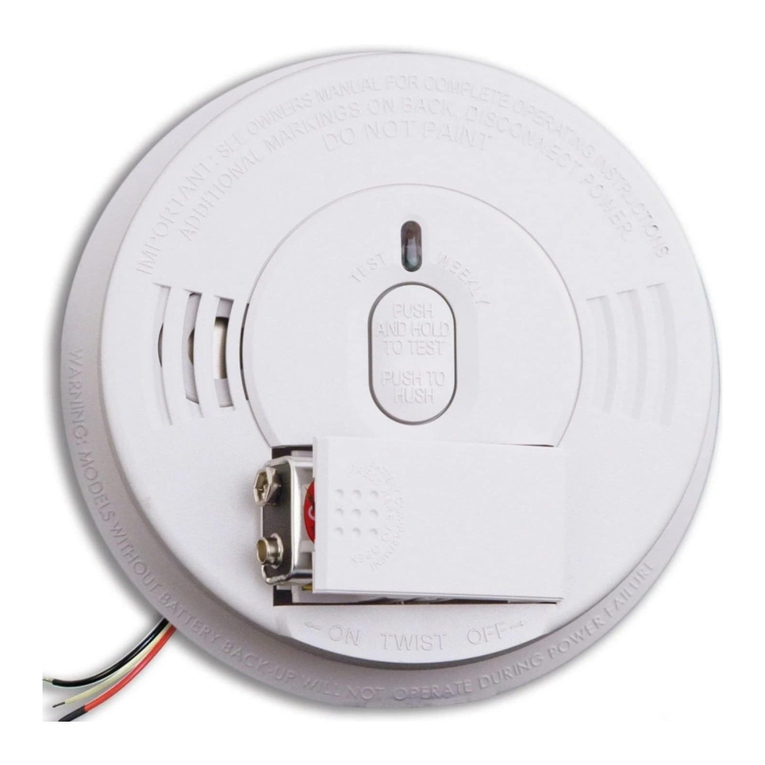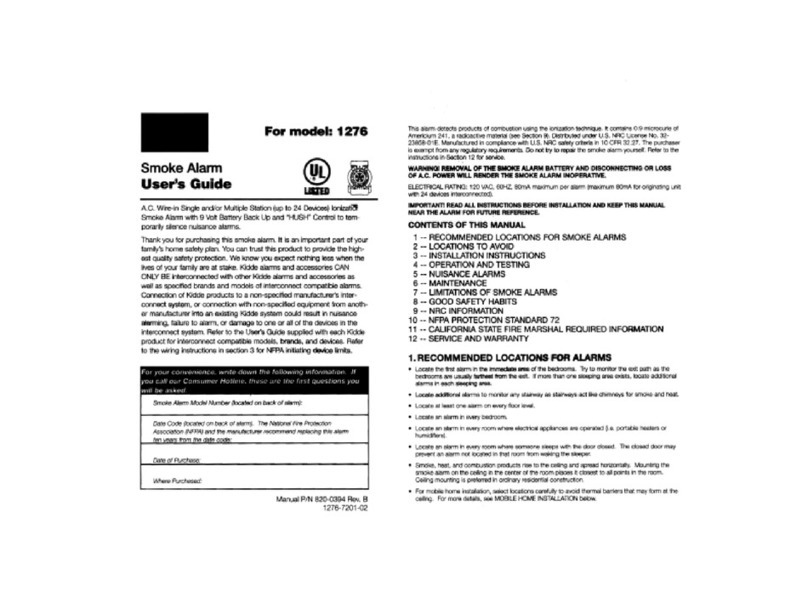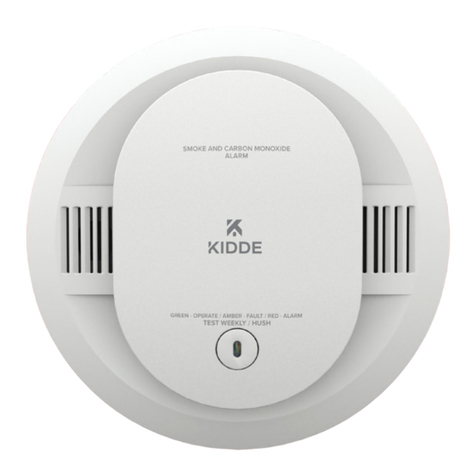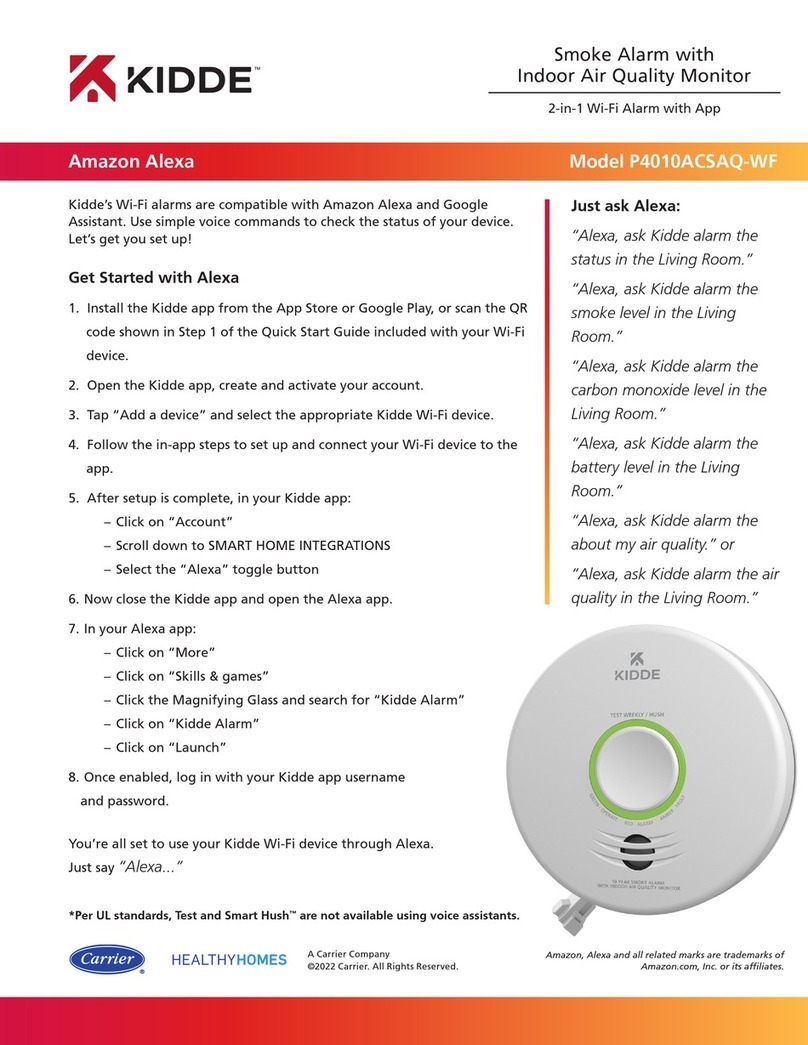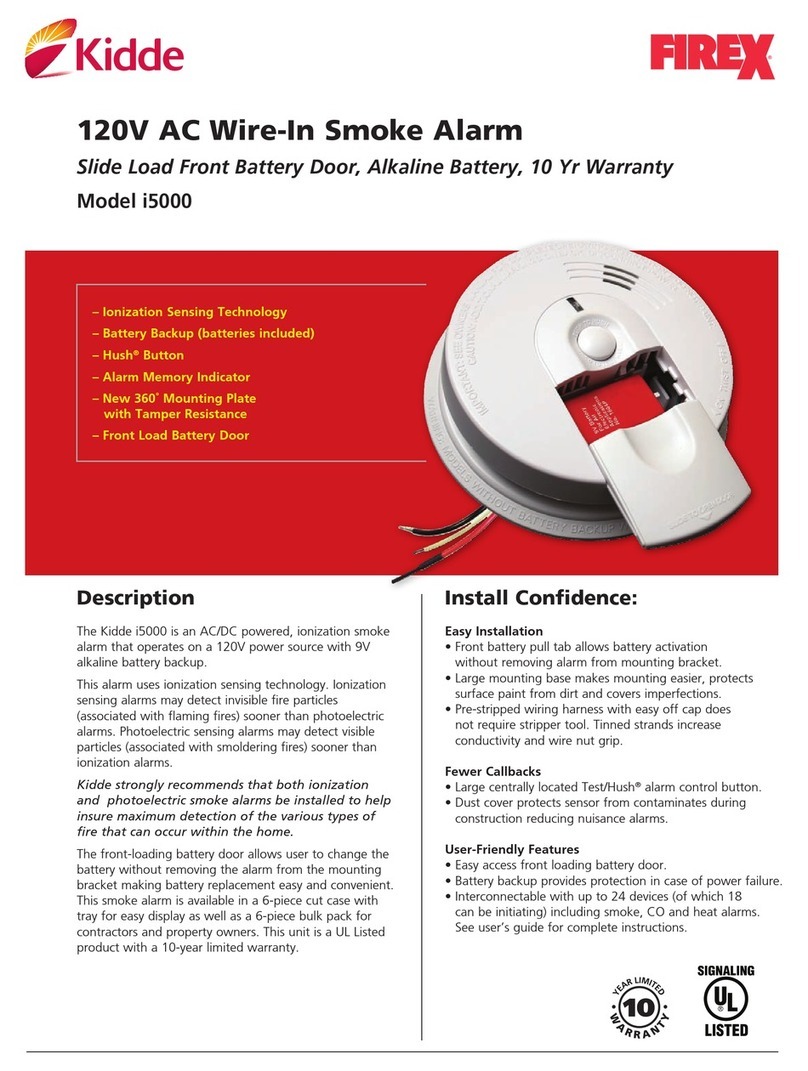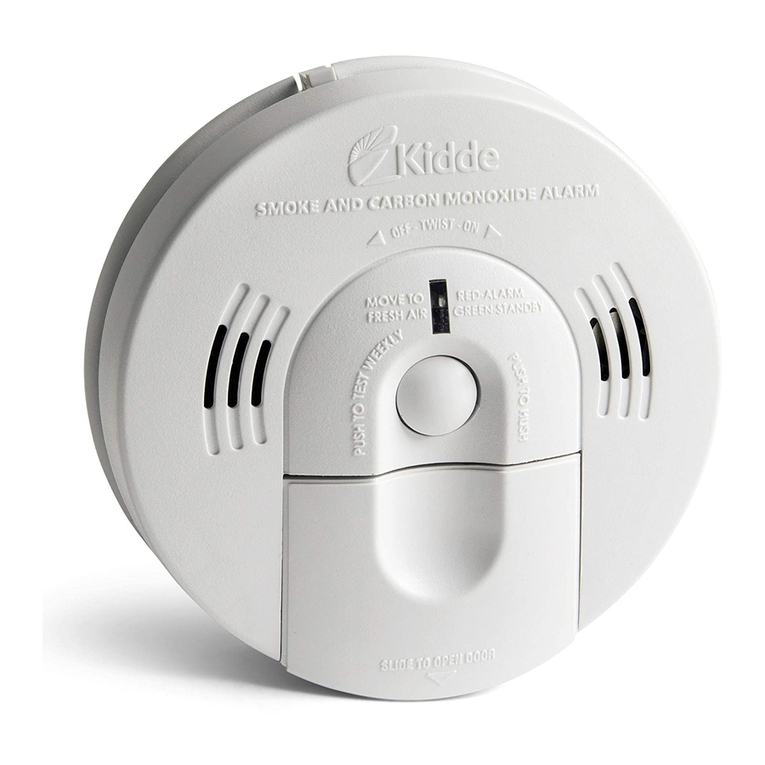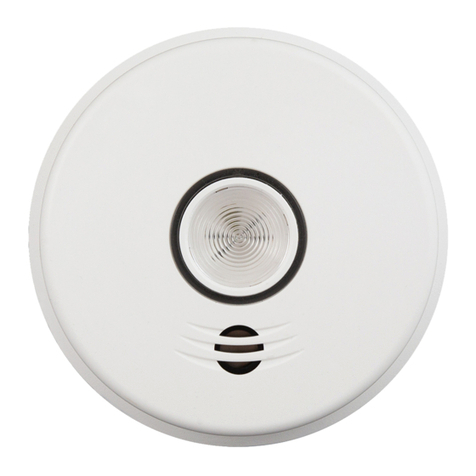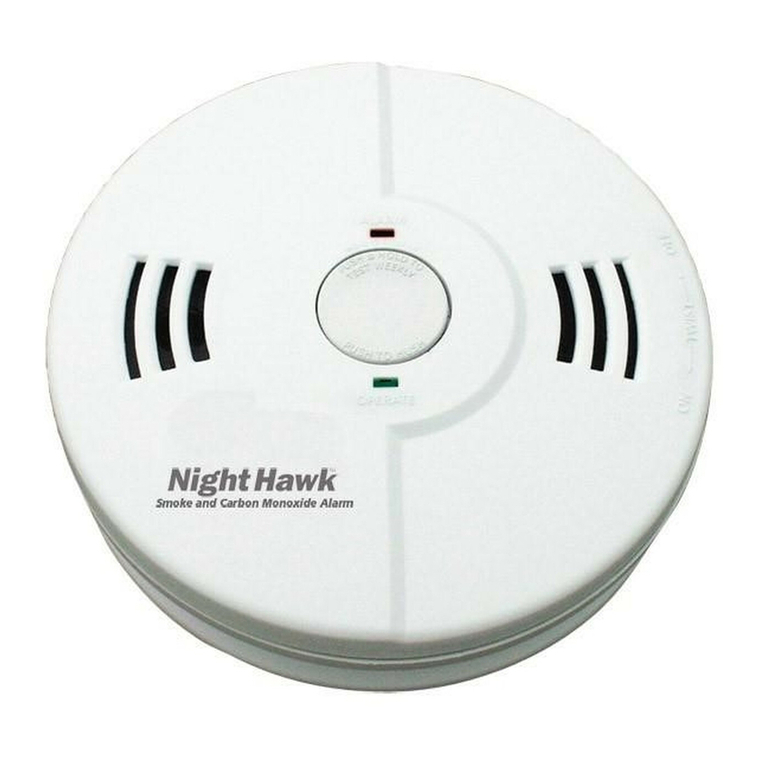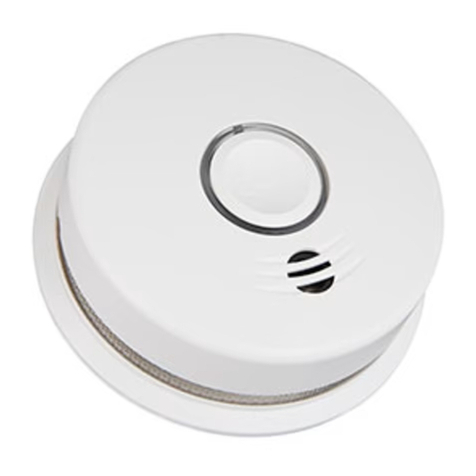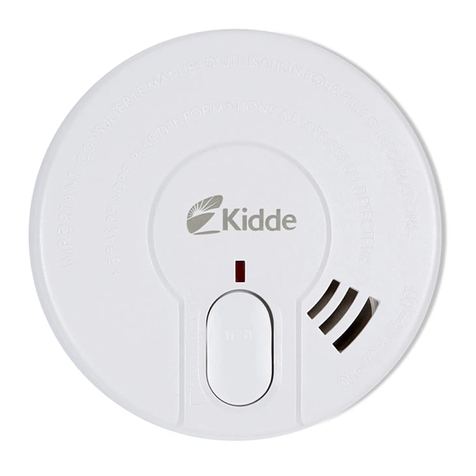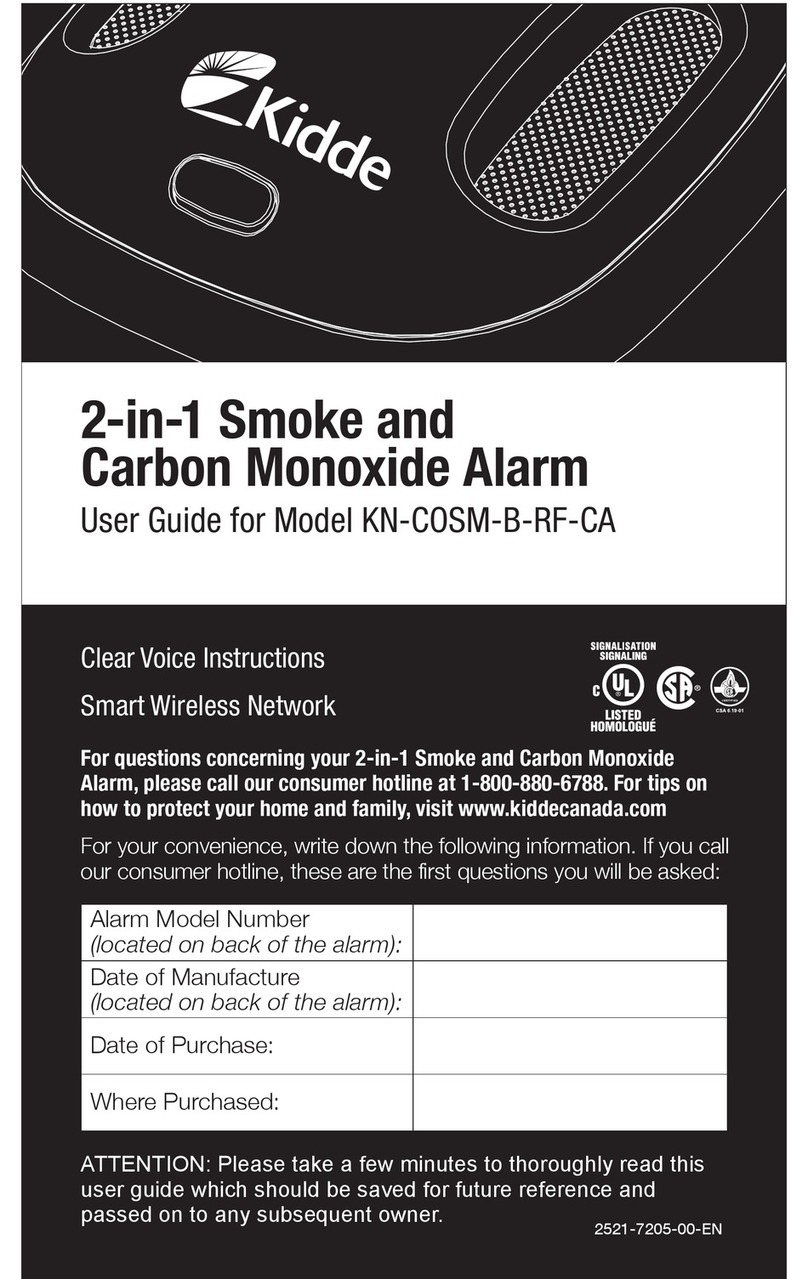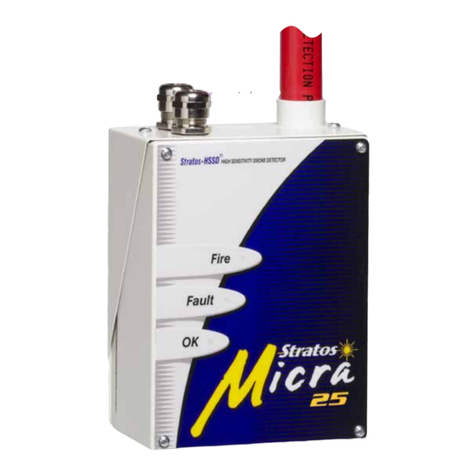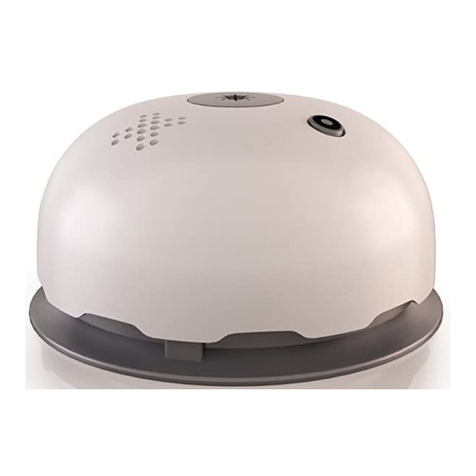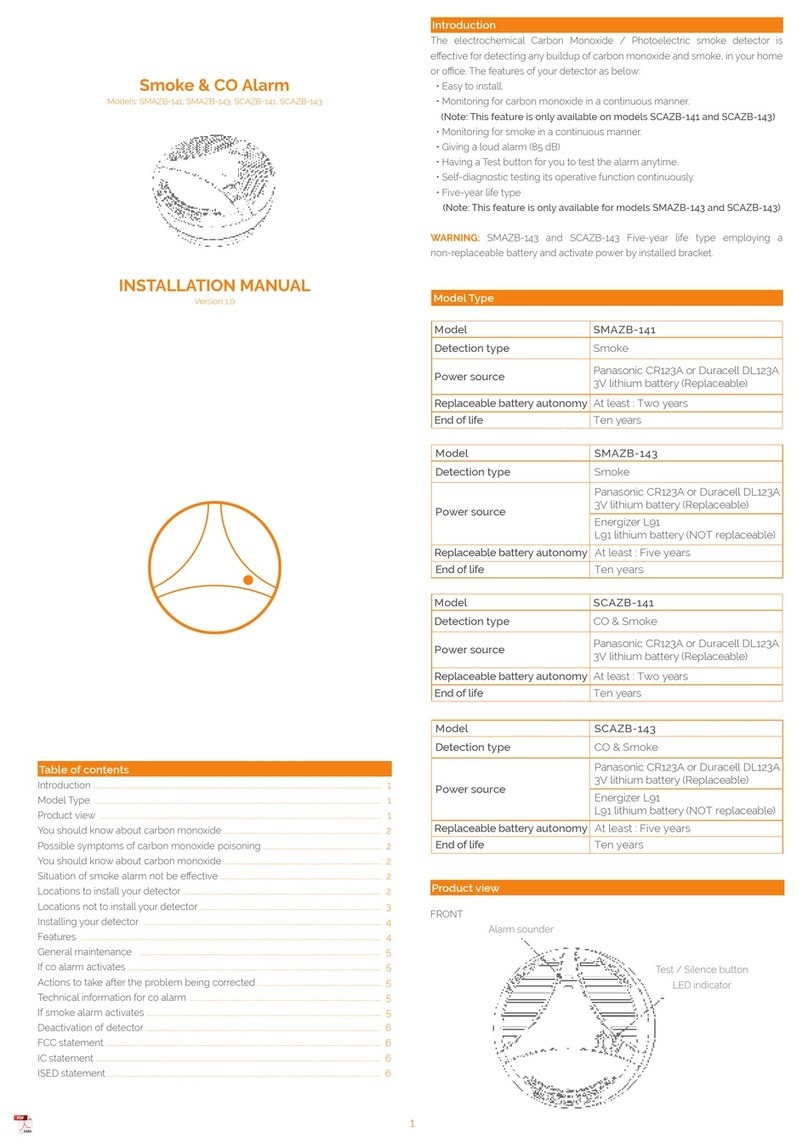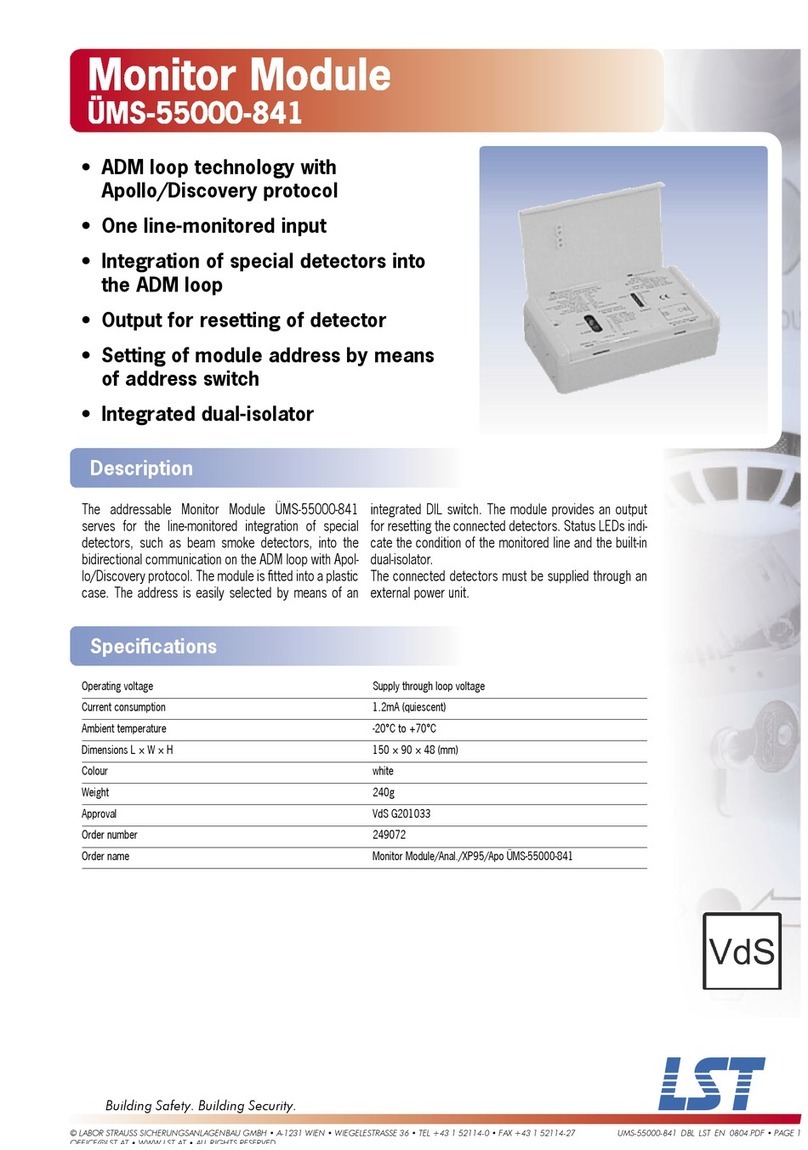mum protection, Kidde recommends that both Ionisation and Photoelectric alarms be installed.
Heat alarms are useful in areas with condensation/dust/high humidity, such as kitchens and lofts.
Heat alarms MUST ALWAYS be interconnected to smoke alarms.
Heat alarms are triggered when a temperature of 57
°C is reached - they are not suitable for
use as a fire safety device independently, they must always be used in conjunction and
interconnected to smoke alarms.
Loose batteries, where fitted must be of the specified type, in good condition and installed properly.
AC only powered alarms will not operate if AC power has been cut off such as by an electrical fire,
an open fuse or loss of mains supply.
All alarms must be tested regularly to make sure the batteries and the alarm circuits are in good
operating condition.
Life safety from fire in residential occupancies is based primarily on early notification to occupants
of the need to escape, followed by the appropriate egress actions by those occupants. Fire warning
systems for dwelling units are capable of protecting about half of the occupants in potentially fatal
fires. Victims can be involved with the fire, too old or young, or physically or mentally impaired such
that they cannot escape even when warned early enough that escape should be possible. For
these people, other strategies such as protection-in-place or assisted escape or rescue are neces-
sary.
Smoke alarms cannot provide an alarm if smoke does not reach the unit. Therefore, smoke alarms
may not sense fires starting in chimneys, walls, on roofs, on the other side of a closed door or on a
different floor. If the alarm is located outside the bedroom or on a different floor, it may not wake up
a sound sleeper. Equally heat alarms will only be triggered if they are correctly sited to detect heat.
The use of alcohol or drugs may also impair ones ability to hear the alarm. For maximum protection
a smoke alarm should be installed in each sleeping area on every level of a home. Hearing
impaired occupiers should consider fitting additional strobe accessories to give a visual alarm.
Although smoke/heat alarms can help save lives by providing an early warning of a fire, they are
not a substitute for an insurance policy. Home owners and renters should have adequate insurance
to protect their property.
If after reviewing this manual you feel that your smoke alarm is defective in any way, do not tamper
with the unit. Refer to Section 13. Contact your Installer, Wholesale Distributor or Landlord.
8
14. Limitations of Smoke/Heat Alarms
Symptom
1. Green L.E.D. not lit
2. Frequent nuisance
alarms
3. Alarm chirps every 40
seconds
4. Alarm does not sound
when test button pressed
and held.
5. Interconnected alarms
do not sound when test
button is pressed and
held.
Possible cause/solutions
a. Loss of mains power – check at Consumer Unit for
Blown Fuse or tripped Circuit Breaker.
b.
Check cables at back of alarm are correctly seat-
ed
/wired in and the alarm is pushed fully home.
(see “Battery Changing” section).
See sections 2,3,4 and 7. If sited incorrectly/not regu-
larly cleaned as section 11, nuisance alarms can
occur.
See section 5 (if the hush button has been pressed
the unit will chirp for 7 minutes to indicate it is in hush
mode).
See parts 1a and 1b above. Have installer re check
wiring if Green LED is illuminated, but alarm does not
appear to function. If no Green LED check consumer
unit. Alarm will still function on battery power, if battery
is in serviceable state. <Red LED will blink about once
a minute to confirm>. Check via Test Button.
See section 4 above – consult a qualified electrician
or your Landlord to remedy as soon as possible.
15. Troubleshooting
• Always turn off the mains supply to AC alarms before checking connections etc..
